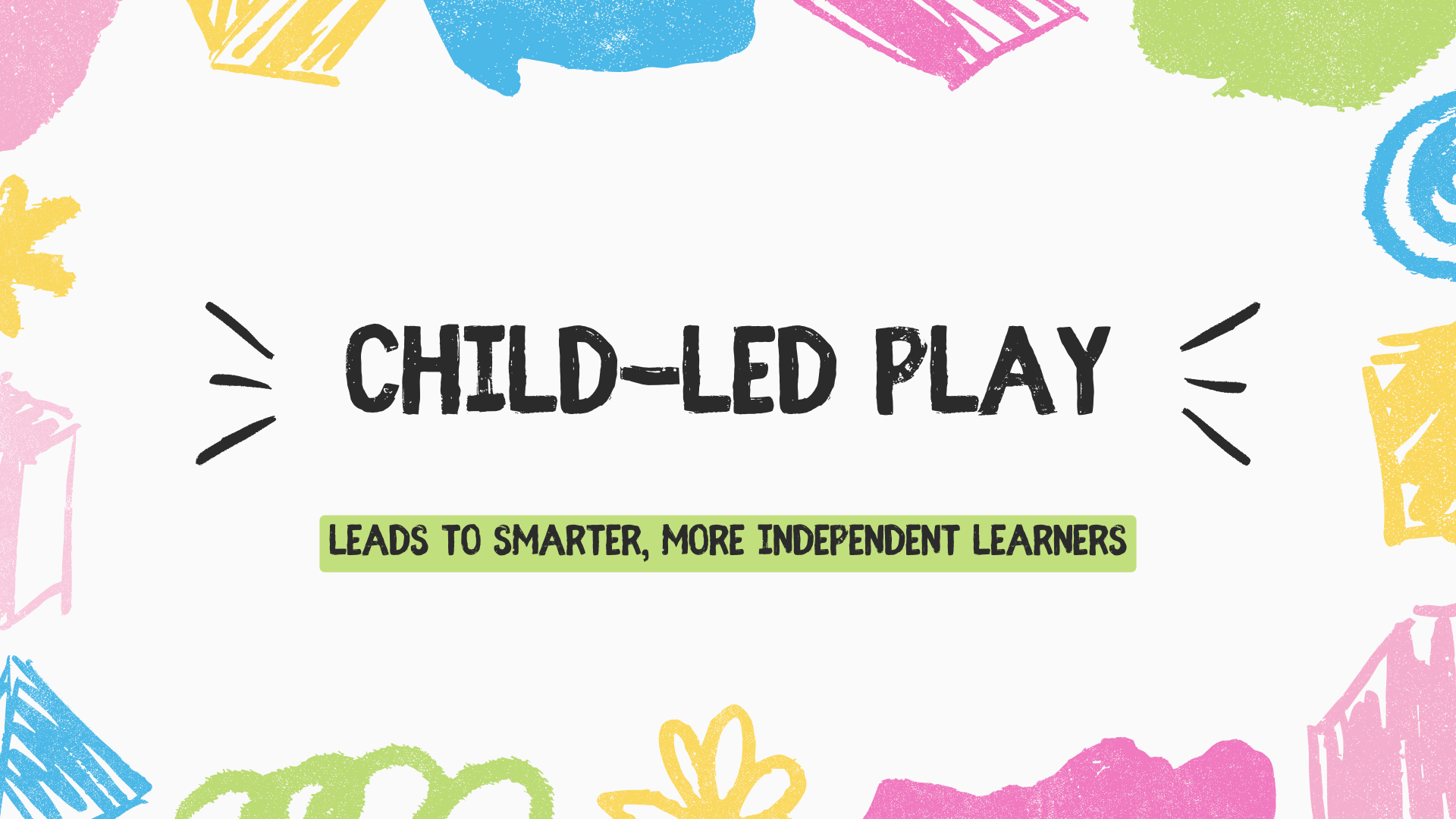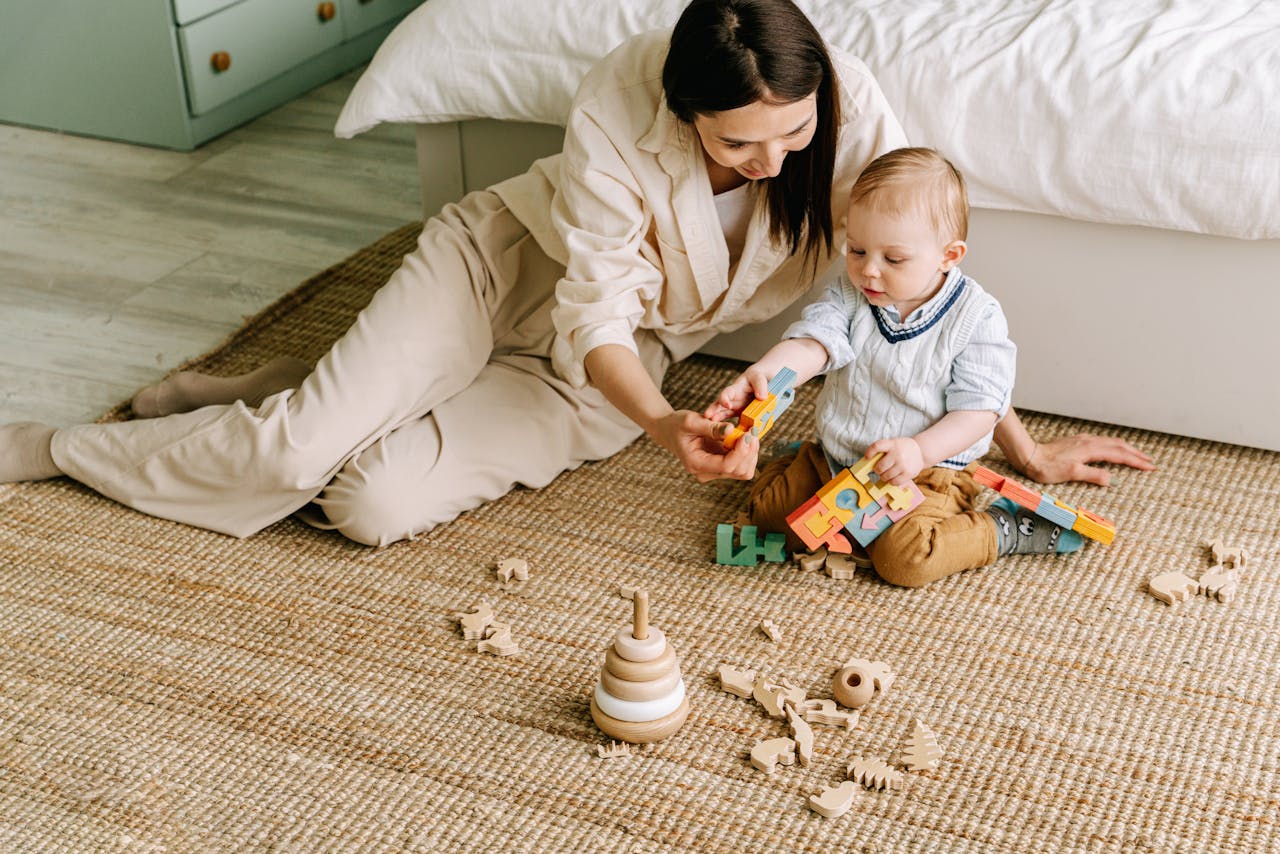🧒 What Is Child-Led Play?
Child-led play is a simple but powerful concept: let your child take the lead, and follow their curiosity.
Rather than directing play with instructions or fixed outcomes, you offer a safe environment, a few intentional toys — and give your toddler the freedom to explore.
Whether they stack blocks, sort puzzle pieces, or line up animals, they’re not just playing — they’re learning to make choices, solve problems, and build independence.
🧠 Why Child-Led Play Builds Smarter Learners
Research consistently shows that children learn best through self-directed exploration. When toddlers are allowed to lead, they:
- Engage more deeply with materials
- Build stronger memory and reasoning skills
- Show better emotional regulation
- Develop early decision-making confidence
- Are more likely to become creative problem-solvers
According to the Early Childhood Education Journal (Whitebread et al., 2012), child-led play enhances executive function — the mental skills responsible for planning, focus, and flexible thinking.
🚫 What Child-Led Play Is Not
It’s not “free-for-all” chaos or parental disengagement. Child-led play means:
- The adult sets up an environment that invites curiosity
- The child chooses how to interact
- The adult observes, supports, and responds when needed — without interrupting or correcting
It’s an intentional shift from “Do this” to “I see what you’re doing — let’s keep going.”
🧩 How Toys Support Child-Led Learning
The right toys can spark independent exploration while still providing structure. Ideal toys for child-led play are:
| Feature | Why It Matters |
|---|---|
| Open-ended | Allows multiple outcomes (e.g., puzzles, blocks) |
| Self-correcting | Gives feedback without adult involvement |
| Visually calm | Promotes focus (Montessori-style aesthetics) |
| Tactile | Encourages hands-on engagement |
Frankie & Leo puzzles are intentionally designed with these principles in mind — to support focused, open play while allowing children to lead the interaction.
💬 What It Looks Like in Real Life
Imagine this:
Your toddler sits down at their play shelf. They pull out a puzzle and begin turning pieces, trying different slots. You sit nearby, quietly watching. Occasionally, you say:
- “That one didn’t fit — I wonder what shape would?”
- “You’re trying that square again. You really like that piece.”
- “You figured it out!”
They repeat the process — maybe failing a few times — until it clicks. In that moment, they’ve solved a problem on their own. That’s real learning.
🧠 Child-Led Play and Independence
This type of play strengthens:
- Self-trust: “I can figure things out”
- Focus: Staying with a task longer
- Resilience: Trying again after setbacks
- Ownership: Feeling in control of their choices
As children grow, these qualities translate to greater independence in:
- School readiness
- Social play
- Everyday decision-making
🏠 How to Encourage Child-Led Play at Home
Here are some tips to set the stage:
✅ Curate a Simple Play Space
Limit toys to 6–8 options on a low shelf. Choose items that are easy to access and return — puzzles, stacking toys, matching games.
✅ Observe Without Interrupting
Let your child problem-solve on their own. Watch for their choices and respond with encouragement rather than correction.
✅ Use Reflective Language
Instead of saying, “Good job!”, try:
- “You kept trying until it fit.”
- “You used both hands to turn that piece.”
This reinforces effort, not just outcomes.
✅ Rotate Toys Weekly
Refresh interest by changing the toys available based on your child’s current interests or skill development.
🔁 Repetition Is Part of the Process
It’s normal for toddlers to repeat the same play pattern over and over. That’s not boredom — it’s mastery.
Repetition allows toddlers to:
- Internalise skills
- Build confidence
- Strengthen brain connections
If they do the same puzzle every day, it’s because that experience is offering exactly what they need at that moment.
💡 Final Thought
Child-led play is more than a method — it’s a mindset. It teaches your toddler to be a thinker, a doer, and a confident learner.
By creating a play space that encourages curiosity — and stepping back just enough to let your child lead — you’re building something far more powerful than a toy collection. You’re building a foundation for lifelong independence.
👉 Explore Toys That Support Child-Led Learning at Frankie & Leo
👉 Keep up to date with us on Insta
📚 Reference:
Whitebread, D. et al. (2012). The Importance of Play in Promoting Healthy Child Development and Maintaining Strong Parent-Child Bonds. Early Childhood Education Journal, 39(1), 26–34.


